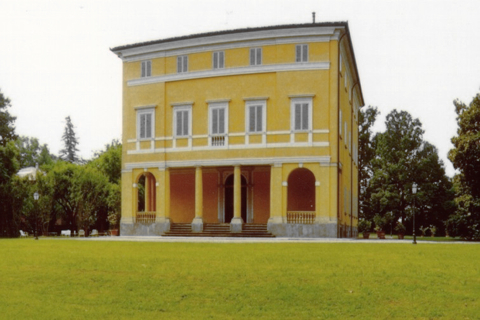-

PALAZZO STELLA

 http://www.palazzostella.org
http://www.palazzostella.org info@palazzostella.org
info@palazzostella.org-

The building can be visited by appointment with the owners.
- The name of this villa derives from Count Giuseppe Stella, who purchased it in the mid 1700s, but the building itself is certainly far older, most likely from the 1500s. Its transformation was probably carried out in the late 1700s, as evidenced by the elegance of its simple lines and the spatial balance typical of Venturoli and Bianconi. Palazzo Stella can be attributed to this pair of architects in particular because of its unique north-side loggia characterized by lateral round archways and central lintel. The villa's interior is laid out along an internal double loggia from which the lateral rooms are accessed. Both of the loggias and many of the rooms present vaulted ceilings decorated with 19th century paintings with floral, lacy or cameo designs interspersed with bucolic scenes, allegorical representations and still lifes. The ceiling of one of the rooms displays work with a “Pompeian” motif, very much in vogue in the late 1700s, when art was greatly influenced by the then recent discoveries of Herculeum, Pompei and Stabiae. The building is found in the midst of its surrounding lands and a romantic park, which boasts many rare species of trees, many of which are particularly ancient. In addition to the 18th century chapel dedicated to St. Anne, the garden also hosts service buildings, including the stables, still displaying its original furnishings, an old-fashioned laundry room, a lovely, vaulted ice house and a pheasant coop.